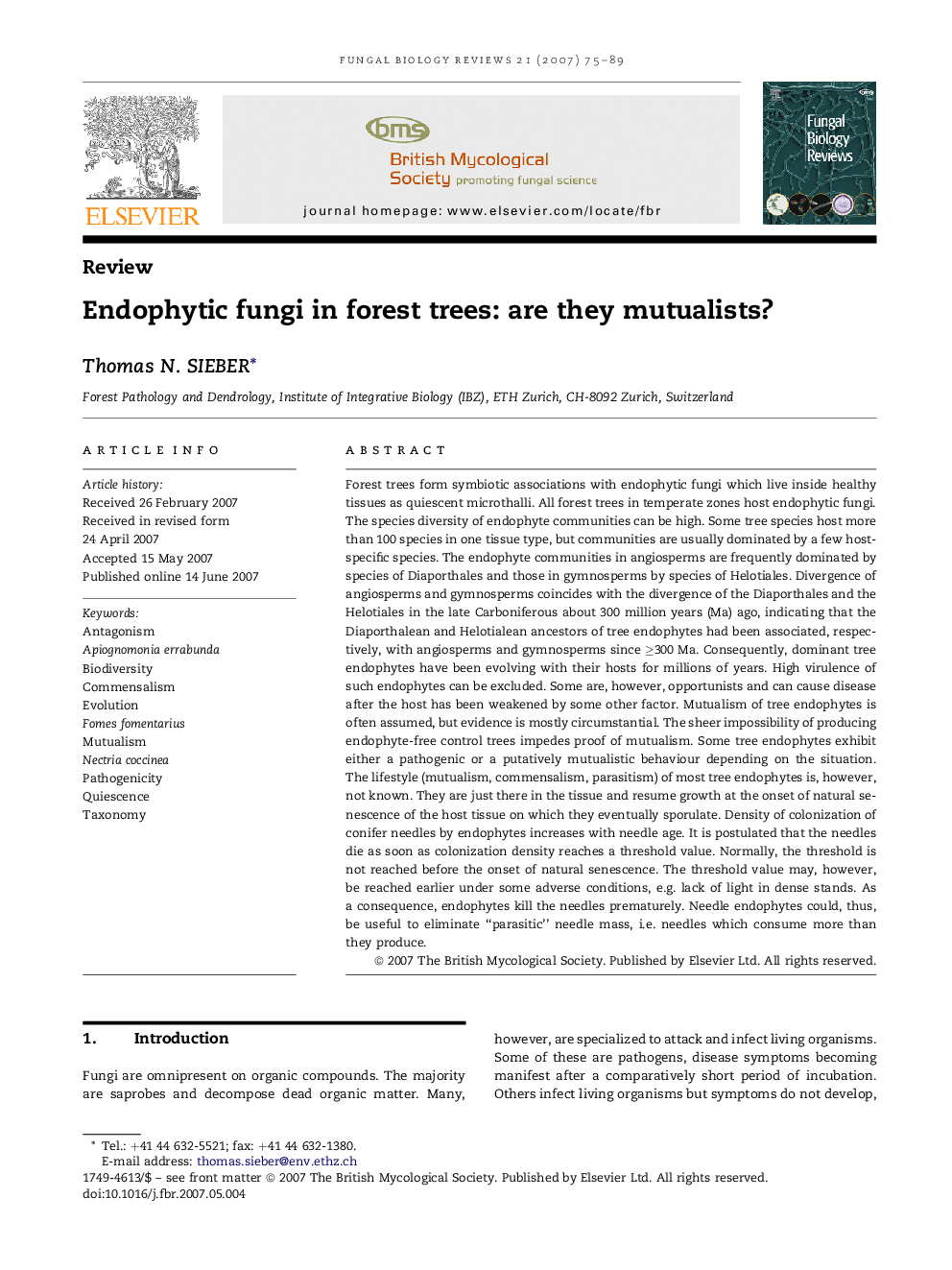| کد مقاله | کد نشریه | سال انتشار | مقاله انگلیسی | نسخه تمام متن |
|---|---|---|---|---|
| 2180634 | 1549969 | 2007 | 15 صفحه PDF | دانلود رایگان |

Forest trees form symbiotic associations with endophytic fungi which live inside healthy tissues as quiescent microthalli. All forest trees in temperate zones host endophytic fungi. The species diversity of endophyte communities can be high. Some tree species host more than 100 species in one tissue type, but communities are usually dominated by a few host-specific species. The endophyte communities in angiosperms are frequently dominated by species of Diaporthales and those in gymnosperms by species of Helotiales. Divergence of angiosperms and gymnosperms coincides with the divergence of the Diaporthales and the Helotiales in the late Carboniferous about 300 million years (Ma) ago, indicating that the Diaporthalean and Helotialean ancestors of tree endophytes had been associated, respectively, with angiosperms and gymnosperms since ≥300 Ma. Consequently, dominant tree endophytes have been evolving with their hosts for millions of years. High virulence of such endophytes can be excluded. Some are, however, opportunists and can cause disease after the host has been weakened by some other factor. Mutualism of tree endophytes is often assumed, but evidence is mostly circumstantial. The sheer impossibility of producing endophyte-free control trees impedes proof of mutualism. Some tree endophytes exhibit either a pathogenic or a putatively mutualistic behaviour depending on the situation. The lifestyle (mutualism, commensalism, parasitism) of most tree endophytes is, however, not known. They are just there in the tissue and resume growth at the onset of natural senescence of the host tissue on which they eventually sporulate. Density of colonization of conifer needles by endophytes increases with needle age. It is postulated that the needles die as soon as colonization density reaches a threshold value. Normally, the threshold is not reached before the onset of natural senescence. The threshold value may, however, be reached earlier under some adverse conditions, e.g. lack of light in dense stands. As a consequence, endophytes kill the needles prematurely. Needle endophytes could, thus, be useful to eliminate “parasitic” needle mass, i.e. needles which consume more than they produce.
Journal: Fungal Biology Reviews - Volume 21, Issues 2–3, May–August 2007, Pages 75–89